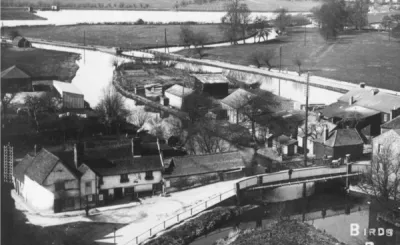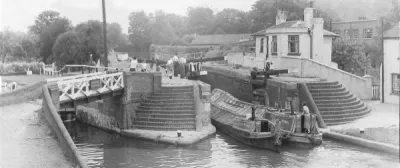A short account of Batchworth
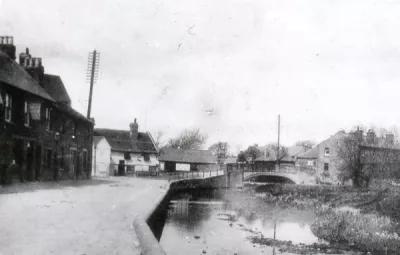
Batchworth was a small ‘knight’s fee manor’ from around 1100, after the Norman Conquest. It was part of the parish of Rickmansworth when that was set up in the 13th Century, and was never a parish of its own. The parish church was, and is, St Mary's in Church Street from around 1250.
In the early 12th century the most fertile and profitable parts of the manor of Rickmansworth, which had been held by the Abbey of St Alban, were broken up and granted to men who provided the king’s military service for which the Abbey was responsible – they were to allow the ‘knights’ to make a living. One of these was the manor of Batchworth, under the lordship of the de Batchworth family who also held Harefield, nearby.
The hamlet developed under the de Batchworths, and in 1269 it was granted by King Henry III the right to hold a Charter Fair on 17th May each year, but losing that right if it missed a year.
The middle of the thirteenth century was the heyday of the Charter Fair, which was a street market on a grander scale. A market was usually a weekly event to allow the population to buy what they needed, while a fair was an annual event designed for trading on a larger scale. A fair required a charter from the king, and allowed the Lord of the Fair to collect rent from those who came to trade, often itinerant merchants and craftsmen. A bailiff would usually have been appointed to oversee the fair and enforce fair trading.
A fair often evolved from a gathering of people, perhaps pilgrims, at a particular place, and there is no obvious cause for Batchworth to have been awarded a fair charter - it may have been granted to the de Batchworths as reward for some military service.
It probably did not prosper for long, given the size of Batchworth even compared to Rickmansworth, but it persisted, apparently ‘on the highway’ and on a piece of ‘waste land’ belonging to Moor Park. In the 1880s several court cases featured people having been at Batchworth Fair, and in 1884 the Clerk of the Court declared that all such fairs had been abolished: but in 1903 it was still going, with reports that, due to difficulty finding enough space, it was declining year by year. In 1901 the UDC discussed it, in 1906 an outbreak of scarlet fever was traced to it, and in 1907 the Medical Officer of Health advised that it had no value and should be abolished. The same term was used in 1933, but as late as the 1960s there was still a small annual funfair at Batchworth.
Who actually organised any of these affairs is unclear, and it seems to have just petered out.
The building of wooden canal boats by W H Walker & Bros at Frogmoor Wharf (now the site of Tesco) is another important part of the story of Batchworth, and is covered elsewhere on this website. One of the 'jobs' of wider relevance was the Elsdale, a floating school set up in a barge donated to the Brentford mission by the Grand Union Canal Company in 1930 and converted for that use by Walkers at Frogmoor Wharf: but there were many, many other notable boats, as well as a full-scale timber yard and builder's merchants all forming part of the Walker's story.
Batchworth Mill is a very significant part of the Batchworth scene. There had been a paper mill of some sort from about 1755, but it was taken over and completely rebuilt by John and Joseph Strutt, nephews of the Derby and Belper cotton magnate Jedidiah Strutt, in about 1772 - there was a corn mill on the same site. It was used to spin cotton thread until 1811, when the Strutts sold the mill to the Grand Junction Canal Company. It was leased to the Fourdinier brothers as a paper mill, and then taken on by Dickinson in 1819. He made it into a paper pulp mill (not making paper, just the intermediate material for his other mills), but the company gave up the lease in 1887 (the booke Passing Through and The Endless Web have more detail). Various companies used it for a few years, then the Rickmansworth and Uxbridge Valley Water Company took it on as a water works, demolishing in 1910 all the old mill buildings except the one remaining.
Batchworth is, of course, on the road from Rickmansworth to London - the name of London Road does suggest that - and the bridge over the Colne at Batchworth was an important one. The responsibilty of the Lord of the Manor, it was washed away by floods in 1795, replaced by a temporary wooden structure, and finally given a proper iron bridge in 1833. By then, in 1809, the road, which climbed Batchworth Hill (as it still does, but on a diffirent line), had been 'turnpiked', with the toll house close to the bottom of the hill. It ran through Northwood, Pinner and Harrow to meet the 'main road' at Subury, near Wembley. The road was taken over the new Hertfordshire County Council in the 1880s, and tolls abolished.
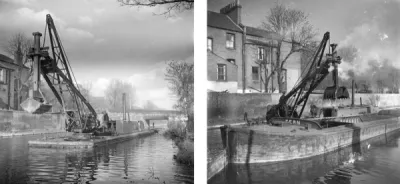
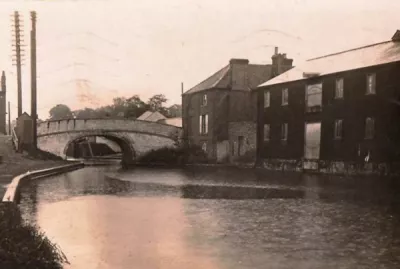
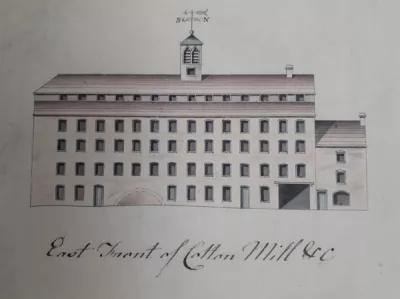
Sand and Gravel were dug here from about 1900, perhaps a little
earlier, by the Rickmansworth Sand and Gravel Company, one of a few
(including Harry Walker) doing that. The Aquadrome (Stockers,
Batchworth and Bury lakes) is formed by the main gravel pits, and
Sabeys Pool above the lock was another, now of course a fishing lake.
Extraction continued well into the 1930s, was restarted during WW2, and finally ceased in 1947.
The gravel went to many places, mainly but not only London as
Metro-land was being developed before and after WW1. The rumour that
Wembley Stadium was built of Aquadrome gravel is not quite that - although it was a bit later (c.1922), and while it's difficult to track any given batch
of gravel, material in the Brent borough archive suggests that much of the gravel used at Wembley came from Stockers Lake, which was the last to open (in 1920) and is the biggest. The opening into the lake from the canal was just below Stockers lock, in what's now the garden of Stockers House, and punts (specialised and very large barges) built largely by Walkers) were used to take the gravel to the Metropolitan Railway below Croxley Green.
A longer blog post on this connection is here.
Asbestos is also part of the story of Batchworth. Cement made at St Anne's works at Harefield was taken by boat to the Asbestos works at Copper Mill, made into asbestos sheet there, and that was brought by boat to the transhipment wharf Batchworth Dock (now known as Chess Basin) and loaded onto trains to go off round the country. That was all around 1890 to 1920.
Our images show a number of the features of Batchworth, including its remarkably numerous pubs. But there is much more to say, and this Blog will be expanded.
